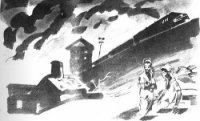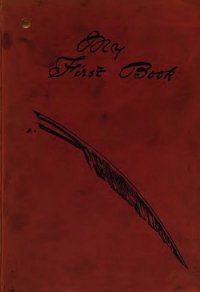Operation Nemesis: The Assassination Plot that Avenged the Armenian Genocide - Bogosian Eric (мир книг .txt) 📗
The terms “Turk” and “Armenian,” used continuously since the end of the nineteenth century, seem easy to understand: Turks are the people from Turkey and Armenians are the people from Armenia, right? In fact, Turks didn’t always call themselves “Turks,” and “Armenians” hail not only from the eastern marches of Asia Minor but also from the Russian Caucasus and would also settle the fertile region of Cilicia, just north of Syria. Aside from their respective religious faiths, the two peoples are in many ways congruent in their culture and style. Both peoples call roughly the same vast territory home.1 In fact, over the last one thousand years, they have intermixed populations continuously via religious conversion, intermarriage, and the complex Ottoman practice of devshirme, the systematic forced conversion to Islam of a prescribed number of Christian young men. In the end, religion became identity.2
An interesting example of intermixture is the Hemshin, a Muslim people who make their home in the mountains near the Black Sea. It is believed that the Hemshin are the descendants of Armenians who fled Muslim raids centuries ago, settled in the region, and over time forgot their roots. As a result, they believe that they are Turks, though they speak an Armenian dialect and continue to practice certain rituals associated with Christianity (for example, rudimentary baptism). In the twentieth century, as railroads and automobiles made Asia Minor a much smaller place, these remote Hemshin villages began to integrate with the rest of Turkey. The Hemshin people started to migrate into larger population centers and as “Turks” were amazed to discover people who spoke their Hemshin mountain dialect.
Over the millennia, the armies of numerous empires invaded and re-invaded the peninsula that extends from the Mediterranean to the Caucasus, from the Syrian deserts to the Black Sea. The Hittites, the Greeks, the Persians, the Romans, the Byzantines, the Arabs, the Seljuks, the Mongols, the Russians, and finally the Ottomans all at one time or another invaded and settled here. Each empire brought its civilization as well as its subject people. Over thousands of years, not only did dozens of ethnic and religious groups such as Kurds, Turks, Arabs, Persians, and Greeks settle in the region but also Jews, Roma, Albanians, Uzbeks, Christian Arabs, Hemshin, Laz, Turkmen and Yoruks, Georgians, Chaldean people, Tajiks, Zaza, later “Tartars” and Circassians, Pomeks, Cossacks, and Uygurs. Unbelievably, even the Normans of France invaded eastern Anatolia at one point. Invaders melded with those who came before them as well as migrants who entered the region as they were chased from their far-off homelands. Before the modern era, a greater variety of peoples crossed and recrossed this region than anywhere else on earth. And as far as we know, going back to the earliest written history, through all these invasions and migrations, the Armenians lived here, as kings and as peasants.
Asia Minor is where the East meets the West, where Asia meets Europe, making the great city of Constantinople a point where most traffic moving eastward or westward, northward or southward, had to pass. The first humans must have traveled through this land northward from Africa. According to the Bible, Noah’s ark finally came to rest on the holy mountain of Ararat, which rises up from the easternmost reaches of the Armenian plateau. The Silk Road traverses this territory. The Ottoman Empire knit together Europe and the Middle East, North Africa and the Balkans. Before it began to break apart, roughly one third of those ruled by the sultan were European, one third Anatolian, and one third Arabian/African. Just prior to World War I, Constantinople was both a European and a Near Eastern capital. For centuries it had been populated by Muslims and Christians as well as Jews, and at the end of the nineteenth century, the mix, reflecting the makeup of the empire itself, was almost fifty-fifty Muslim-Christian. Asia Minor has always been a place of convergence.
After the earliest years of Ottoman conquest, when the Armenians became a subject people, it was the Muslim Turks who held power as military men, administrators, or clerics, as inheritors of a vast militaristic empire. Often the Christians and Jews performed those tasks the Muslims avoided. They became the artisans, the merchants, the traders, the bankers. In the earliest days of the Ottoman Empire, society was divided not so much by religion as by “those who fought in its wars and those who paid for them.”3 The people who belonged to the sultan’s military-administrative machine were known as askeri. The taxpaying class, by contrast, was known as raya (from the Arabic meaning “flock”). In time, raya would refer to the Christian peasantry.
In the first century after the death of Jesus, long before the Ottomans arrived in Asia Minor, apostles of the new Jewish sect based on his teachings traveled to outlying lands spreading the “good news.” It was natural that some would end up in the kingdom of Armenia, which around the time of Christ existed as an autonomous if subordinate region of the Roman Empire. According to legend, Saint Jude (also known as Thaddeus), one of the original twelve apostles, was the first to make his way to Armenia, whereupon he converted the king’s daughters. A few years later, Saint Bartholomew also visited Armenia and made yet more conversions, including the king’s sister. (In the early Christian era, women seemed to be attracted to conversion more often than men.) These missions did not end well for the apostles, both of whom ended up as martyrs, Jude in Beirut and Bartholomew at Albanopolis in Armenia. Bartholomew is traditionally depicted in religious imagery as crucified upside down or skinned alive, as in Michelangelo’s Last Judgment, where he is seen clutching his own flayed skin. Because the first Christians in Armenia were converted by original apostles, Armenians named their form of Christianity “Apostolic.”
By AD 200, according to Tertullian (widely considered to be the first Christian author of note), numerous Christian enclaves had been established in Armenia. The Armenian rulers at the time hewed to the policy of the Roman Empire and tried to root out these secret societies. They persecuted the followers of Jesus with increasing violence, just as the Romans attempted to extinguish the cult wherever it arose in the empire.
Around AD 300, two and a half centuries after the apostles arrived to make converts, the reigning Roman emperor, Diocletian, became one of the most energetic antagonists of the new faith. This was the era when Christians would be smeared with pine tar and set afire or forced to fight hungry lions in the Roman Colosseum for the entertainment of the masses. The reigning Armenian king, Trdat, being an ally of Diocletian, followed suit, and became notorious in his own right for torturing and killing Christians.
An itinerant Christian monk named Gregory arrived at Trdat’s court. Here the story gets complicated, because not only was Gregory Christian but also, according to legend, he was the son of Anak, the assassin of King Trdat’s father. (Some sources claim that Gregory specifically sought out Trdat as a way of atoning for his father’s sin.) When Trdat learned that the young monk was Anak’s son, he had him tortured and tossed into an underground stone cell littered with dead bodies and crawling with serpents. The cell is located at the Khor Virap monastery in Armenia, and to this day, pilgrims to the Armenian homeland delicately descend, one by one, into the gloomy chamber by means of a steep iron ladder.
The legend has Gregory remaining in solitary confinement for a full thirteen years while King Trdat continued to wreak havoc among the believers. According to the fifth-century historian Agathangelos, thirty-seven Christian virgins, fleeing Roman persecution, arrived in Trdat’s kingdom during Gregory’s imprisonment. The king lusted after one of the virgin nuns, Hripsime, a renowned beauty. Hripsime had, of course, taken a vow of chastity, so she resisted Trdat’s advances. In a rage, the king tortured and killed Hripsime, then martyred the entire flock of young virgin nuns. (One did manage to escape: Saint Nino, patron saint of the Georgian Orthodox Church, who went on to found Christianity there.)




